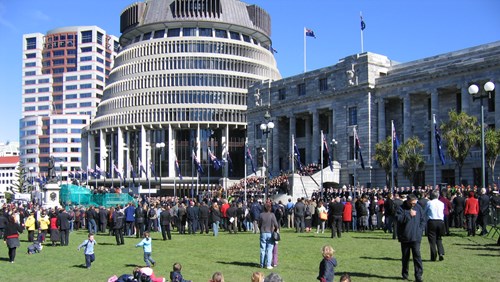
NSW Greyhound Industry Unveils Future Blueprint
A Blueprint for the future of greyhound racing in NSW is finalised with a number of exciting initiatives set to deliver a thriving, inclusive, transparent and sustainable industry.
The Blueprint was devised following industry collaboration at the Future Summit held in May where a cross section of stakeholders discussed and finessed key initiatives designed to dramatically propel the sport forward in the next two years.
The Summit attendees – which included representative from race clubs, the Young Participants Panel, the Greyhound Breeders, Owners & Trainers Association, Greyhound Clubs NSW, several leading trainers, and members of Greyhound Racing NSW (GRNSW) – identified several key objectives, some which work has already commenced on, others which are in the planning phase and will be implemented across the next 18 months.
Among the major projects being undertaken are Racing Footprint Optimisation, Public Syndication, Time Based Grading, and substantial improvements to the Pet Placement Programs.
“As an industry we couldn’t just continue as we were without definitive plans and pathways for the future,” GRNSW Chief Executive Officer Steve Griffin said. “The idea of having the Industry Future Summit was so that as a combined industry we make important decisions and together develop a Blueprint that will see greyhound racing in NSW take giant strides forward.
“That’s what I am most pleased about … this Blueprint was put together by the entire industry with the shared vision to make our sport even greater.
“There is no doubt that the industry has taken some significant steps forward in recent years, particularly with welfare, but it is now time for us to begin to make major advancements and start to fulfil our enormous potential.
“The first future step was taken with the Summit, now GRNSW will again be working with key stakeholders and partners, our clubs across NSW, the State Government and of course our participants, to bring this Blueprint to life and begin the invigoration of the industry.”
The Racing Footprint Optimisation project is one of the most significant the industry will undertake. It was discussed at length during the Summit, and unanimously agreed that the State has too many racetracks to be sustainable.
The advantages of optimisation can be seen across the industry through maximising returns and profits for clubs and participants, lowering club and industry operating costs, allowing clubs to be autonomous and financially independent, as well as allowing clubs to realise the non-racing potential of their capital assets.
A multi-national corporation was enlisted to examine data and criteria for all racetracks and will report back later this month with their findings, before the outcomes are implemented starting later this year and into 2026.
“We all understand how crucial to the industry’s future optimisation is and that’s why it was one of the first major initiatives out of the Summit,” Mr Griffin said.
“A substantial amount of work is being done on the project and we are looking forward to receiving the report and see exactly what optimisation might look like.
“I understand why some people are apprehensive but they shouldn’t be. This is what the industry needs, it’s vital, and when implemented it will be massive for us all.”
Another key Blueprint item will be the growth of Public Syndication which will see an increased investment in the industry through ownership and wagering, and simultaneously provide participants with an additional income stream.
“Public syndication is something which has been spoken about in greyhound racing for some time and it was clear from the feedback at the Summit, that it’s imperative that we can make it work,” Mr Griffin said. “What is required in greyhound racing, as it is in the thoroughbred code, is a simple and easier way for individuals to invest in our sport.
“The benefits flow on through to the entire industry, firstly through investment and ultimately with syndicate members either adopting their greyhound or ensuring it is placed as a pet.”
Pet Placement Matching and Private Pet Placement Providers are also embedded in the Blueprint.
The plan is to create Private Pet Placement Franchises which will give participants a user-pay, fast-track option, substantially reduce demand for Greyhound As Pets placements, and reduce GRNSW rehoming program costs, which will in turn see additional funding for welfare programs flowing from saving and franchise fees.
Pet Placement Matching will look to not only streamline the adoption process but make it more cost and time effective for all.
“We are also in the process of introducing a Greyhound Welfare Scheme,” Mr Griffin explained. “This will allow us to build a sustainable model for funding all welfare programs, and in turn enable a greater focus on welfare initiatives.
“The flow on from this will see us with the highest quality welfare programs in the country, increase rehoming levels and subsequently lead to increases in prizemoney.”
Mr Griffin added that GRNSW will continue with its track upgrade program which will have a specific focus following optimisation, and ensure all tracks are to standard by the end of 2026.
Another initiative is the introduction of 10 Dog Straight Track Racing with a timeline of 2026-27, while Time Based Grading will also be introduced later this year.
Ten dog racing will provide a point of difference in the highly competitive wagering market and increase the share of wagering revenue ensuring the future sustainability of the sport, while the new grading system will further maximise racing opportunities for greyhounds.


